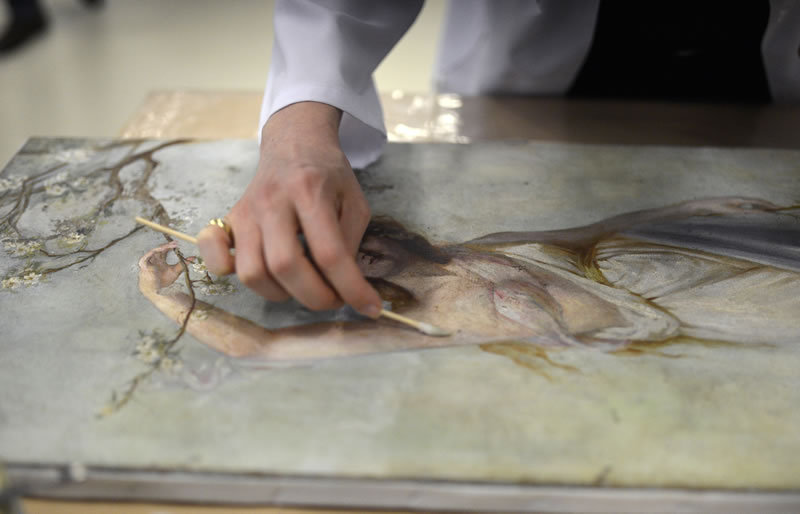
Conservation and restoration of cultural heritage

Thanks to the excellent biocompatibility and the possibility of intercalating a large variety of functional molecules, Hydrotalcites and lamellar solids are ideal materials for the conservation of cultural heritage and the prevention of deterioration of art works. The lamellar solids can be easily dispersed in polymeric matrices for the production of composite materials, paints and coatings, greatly expanding the range of applications.
Hydrotalcites possess the ability to intercalate/capture CO2, anions and acidic substances. This property allows their use as de-acidifying, scavenger and consolidating agent for works in marble, mortar, plaster and frescoes with better efficiency than calcium hydroxide. The elements present in the basic material (Mg, Ca, Al, etc …) are already present in many of the artistic artifacts, therefore the structural consolidation is absolutely sustainable and compatible with the mortars used in the past.
The appropriate modification of the interlayer region of the materials allows the introduction and the gradually release of molecules with important activity in the conservation of the work arts such as the inhibition of bacterial growth, anti-fungal activity, anti-corrosion and protection UV.
The lamellar solids can be formulated and used for the following applications:
- Nanopowders for the consolidation of marble and plaster works (statues, frescoes and monuments);
- Dispersions in water and non-polar green solvents, both for the consolidation and the preparation of functional coatings;
- Oxygen scavengers: functionalized by intercalation of molecules with antioxidant activity;
- Antimicrobials: functionalized by intercalation of molecules with biocidal activity;
- Anticorrosive agents: functionalized by intercalation of anticorrosive molecules or chloride scavengers;
- Alkaline reserve: lamellar solids able to gradually release alkaline substances;
- Acid scavengers: lamellar solids able to capture acidic substances such as HCl for the deacidification of papers, parchments and silk works (tapestries);
- Enzyme immobilisation: enzymes supported on lamellar solids for the conservation of silk works.
